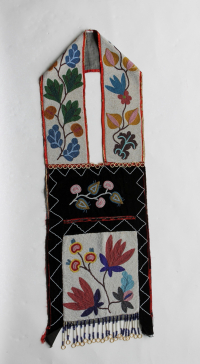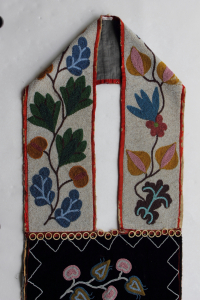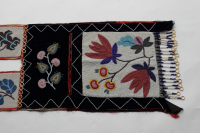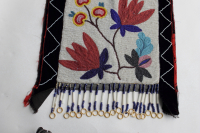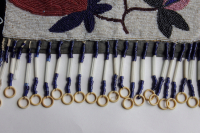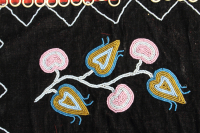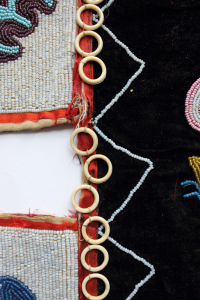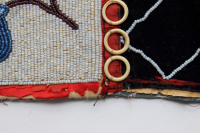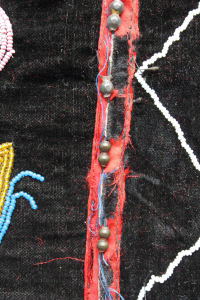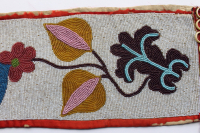Bandolier bag
Bandolier bag
Bandolier bag
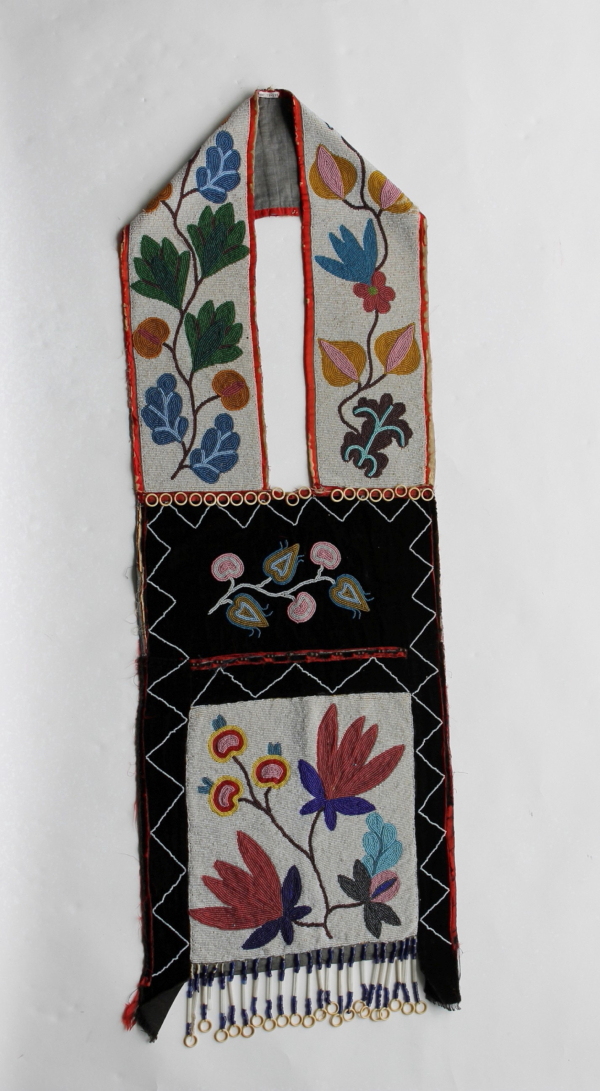
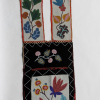
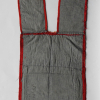
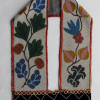
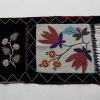
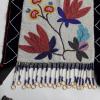
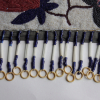
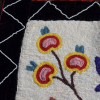
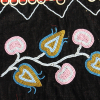
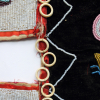
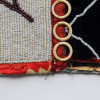
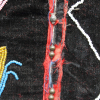
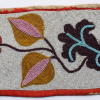
Bandolier, velvet, overlaid spot stitch beadwork on pouch panel & straps, symmetrical & asymmetrical decorative beaded designs, fringe
catalogue records
Summary of Catalogue Description
Read More About This Relative
Cotton muslin and chambray, black velvet, seed beads, satin ribbon, thread.
Rectangular pouch panel with two-piece strap, Bottom portion of pouch front and shoulder pieces are cotton muslin fully beaded, Black velvet top and sides, All edges including pouch opening have red satin ribbon border, except bottom edge, which has twenty-three string fringes.
Pouch panel and straps fully beaded with broad floral designs on white pearlized background, Top of pouch above opening also beaded with floral design, White beads used for inner border of zigzag lines on pouch edges and along opening, Backing for pouch and strap is blue cotton chambray cloth, Edges including pouch opening have red satin ribbon border, except bottom edge, String fringes of large cylindrical square facetted beads in blue and white, Bottom of pouch has brown round beads placed in sets of two, Sewing done with black and white thread.
Bandolier bags most likely originated in the Upper Great Lakes region during the 1840s and 1850s. Fashioned exclusively from European materials and adorned with thousands of beads, bandolier bags were primarily for show, as a symbol of identity, wealth and status. Although initially functional, by the late 19th and early 20th centuries many of the bags had false pouchs or none at all. Sometimes called "friendship bags", they were often created as gifts to strengthen relationships within communities or between nations. By the 1870s they had become an important element of formal dress worn mainly at ceremonies and celebrations by men, and occasionally by women. They wore them - singly or several at a time - crossed over the torso or draped around the neck. The wearing of more than one bag was generally the prerogative of a leader or a person of high honour." (McCord, 2013)
From catalogue records.
Provenance
Hudson's Bay Company Winnipeg Retail Store is identified as the source of this bandolier
McCord Museum, Wearing Our Identity. Montreal: The McCord Museum, 2013; Print.
Hudson's Bay Company Winnipeg Retail Store is identified as the source of this bandolier.
About This GRASAC Record
Manitoba Museum













Attributed to the Northeast Great Lakes Riverine Geo-cultural area in collection records.
 Knowledge Sharing Platform
Knowledge Sharing Platform

